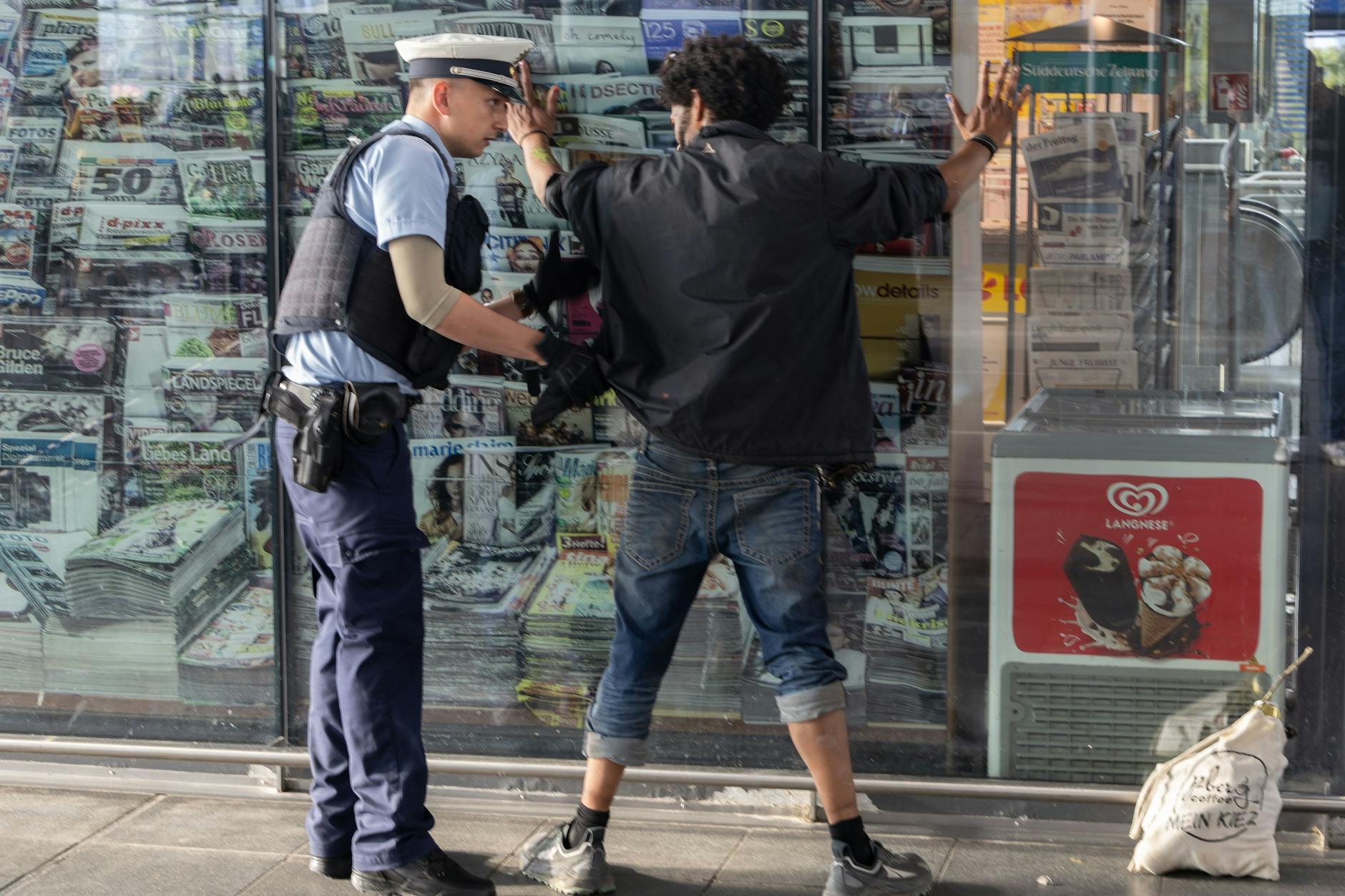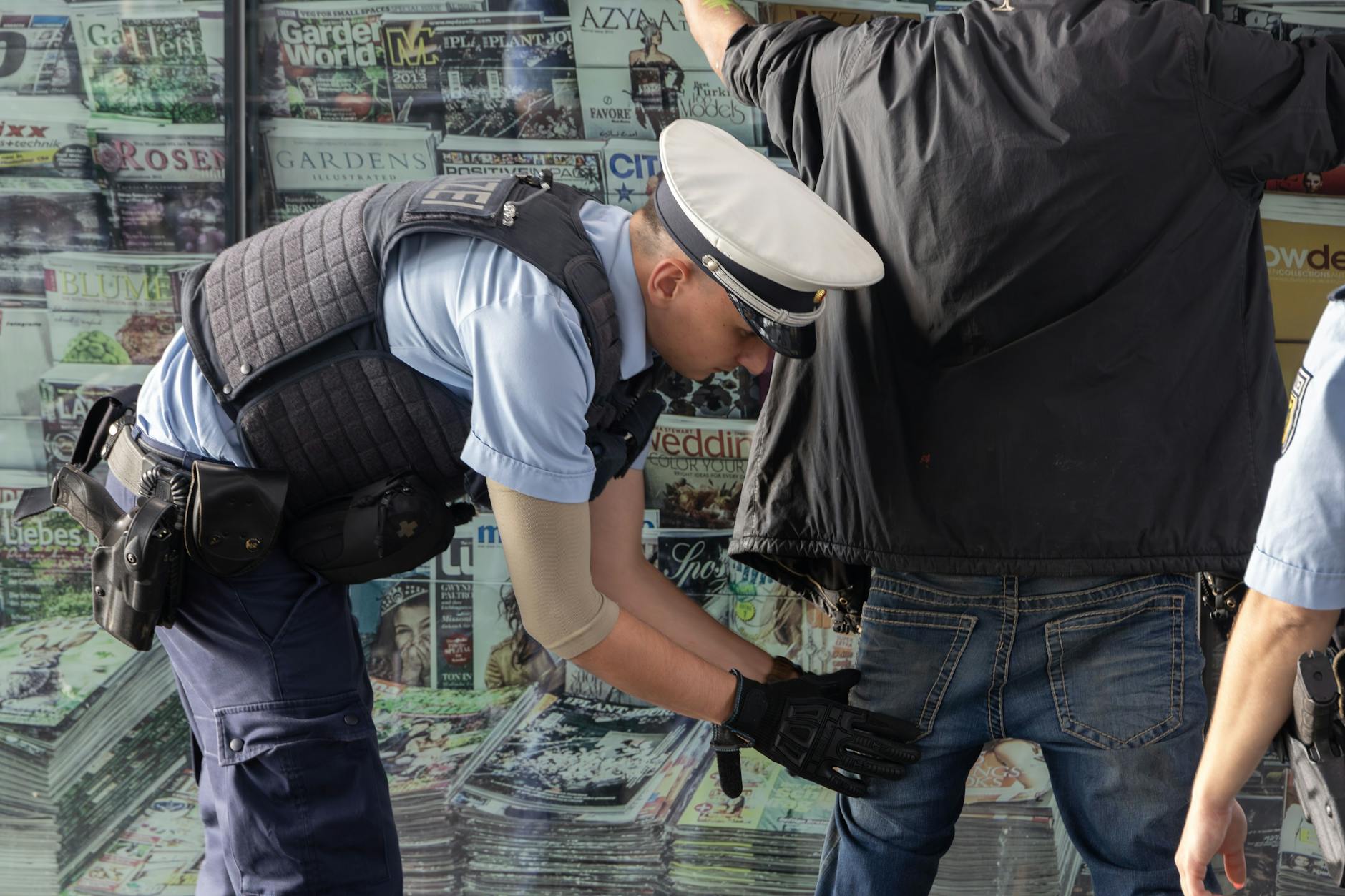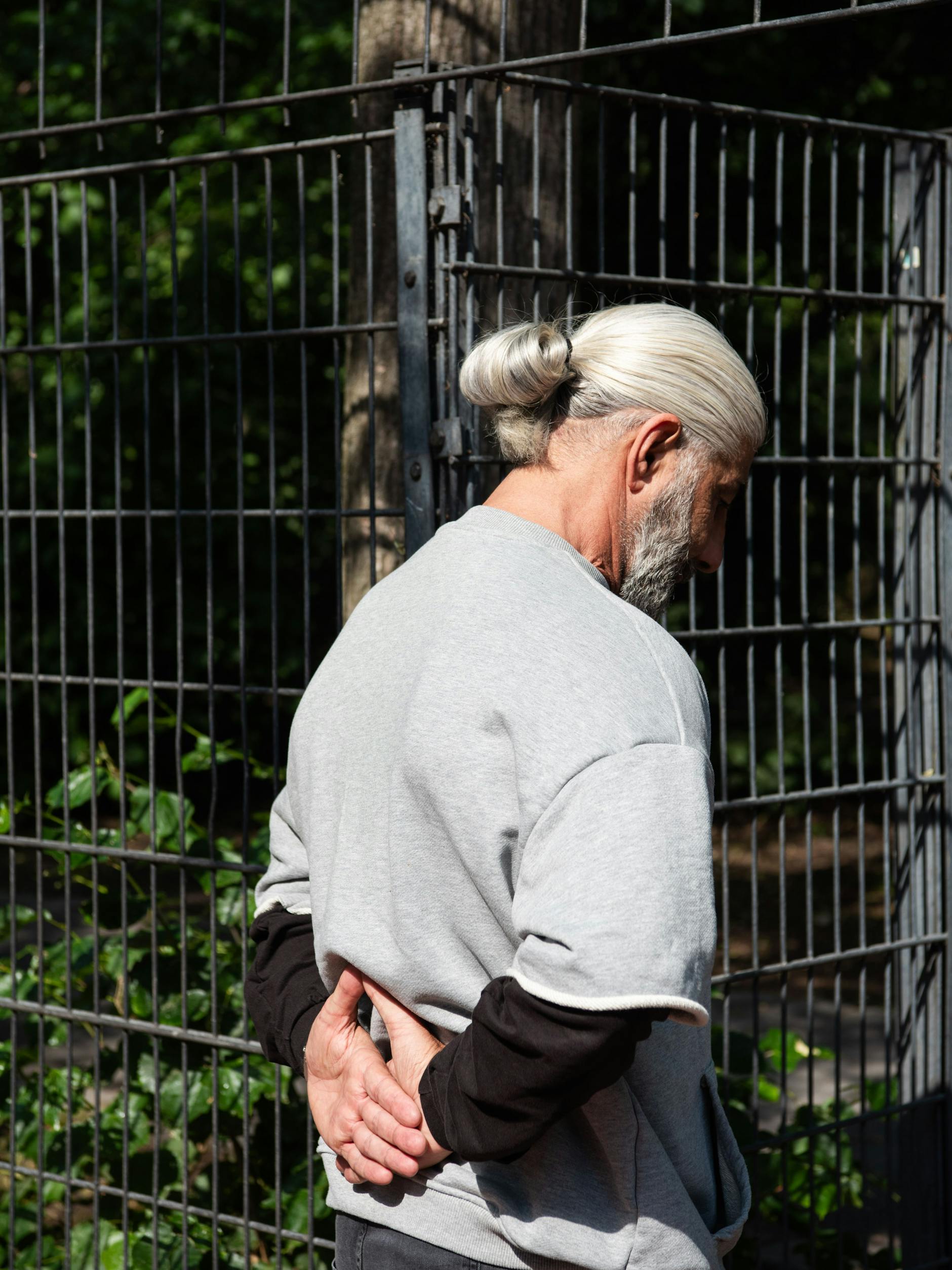Knife attacks: How Berlin boys glorify violence

One evening at a train station in eastern Berlin, a police patrol, everyday life in the capital: The police stop a young man, question him, demanding answers. He rolls his eyes, visibly annoyed. He doesn't understand what's happening to him. He says he's from Ukraine, and he doesn't understand why he's being searched, or what a "general order" even means. A policewoman stands in front of him, explaining everything to him in a gentle voice. When the young man becomes even more annoyed, more aggressive, her voice grows louder.
Until June 30, travelers in Berlin are prohibited from carrying dangerous objects, including knives. Therefore, federal police officers are conducting checks at the main train station , the Zoological Garden, Friedrichstrasse, Alexanderplatz , Gesundbrunnen, Spandau, Ostbahnhof, Warschauer Strasse, Ostkreuz, Lichtenberg, Neukölln, and Südkreuz. Violations may result in confiscation of weapons or objects and a fine.
81 knives, 36 tear gases, 22 tools, 12 bladed weaponsThe check at the train station continues. A police officer searches the annoyed young man. He isn't carrying any weapons or anything similar. Nevertheless, there are problems. Although he has his Ukrainian passport with him, he doesn't have other important documents. The police officer now checks his residence permit with the control center. Finally, the answer: Everything's in order. The teenager is allowed to move on.

In most cases, those stopped aren't carrying any dangerous items. They're just upstanding citizens going about their business. Occasionally, police encounter someone carrying drugs. These are confiscated, and the circumstances are reported to the police. Nevertheless, Berlin officers continue to score a hit: In the first two weeks of the weapons ban, they seized 81 knives, 36 tear gas cans, 22 tools, twelve bladed weapons, five guns, and four dangerous items.
A serious warning sign, but is it also a sign of the brutalization of children and young people in general? Are young people now ticking time bombs, ready to pull out a knife at any moment? And what is the cause of the increase in knife violence among young people?
What's striking is that the officers predominantly target men under the age of 30. They usually wear T-shirts, loose-fitting jeans, and small black shoulder bags. Like Cinek. Cinek comes from what he calls a "slightly more dangerous area." He's on a school trip to Berlin. Cinek and his friends are surprised: "We don't even look dangerous, not like Rambos or anything." Nevertheless, they understand the police's stops. They're also familiar with stabbings in their hometown, Hamburg-Harburg. They say they don't carry knives themselves: "We don't do things like that."
Knife at the neckIf you ask around in the city, it becomes clear that for many young people from small towns who are just visiting Berlin, the knife issue isn't yet a problem. Knife violence seems to be primarily a big-city phenomenon. A Berlin boy in a light-blue jogging outfit talks in Mauerpark about being threatened at school. "They immediately grabbed my bag. I know what they had in there. They really wanted to fuck me," the teenager says.
Another time, he witnessed someone holding a knife to a schoolmate's throat. "He had been talking badly about his sister." Then he shows three narrow, white scars on his left forearm. Two were inflicted by a girl, "But this one is from a knife." The police intervened. "School, digger, no idea, yeah," the teenager says, somewhat phlegmatically.
He knows a few guys who carry knives: "They think they're cool. But they really don't know what it's like in the real ghetto. They all act like ghetto guys, like Gucci-wearing gangster wannabes." The boy seems like a cliché, but on the other hand, he flashes more life experience than many social workers have. He's one of many who grew up in a problematic environment – and hopefully will turn things around.
Ahmad Mohammed is one of those guys: Once a troubled man himself, someone who got into fights, he became a bodyguard. He knows his way around the streets of Berlin inside out. On a soccer field in Schöneberg, the muscular senior kicks a ball to a skinny teenager. A second boy joins in the spontaneous game. Mohammed cheers the two youngsters on—like a true soccer captain. "Cross, cross—he's got to go for the goal!" He asks the kids about Messi, of course.

It's a game, but so much more. Mohammed wants the children to take the right path and not do anything stupid. That's why he makes time for them. Mohammed is good with young people. He talks to them, shows them that you can make it, even if you come from the very bottom. He has a connection with young people who have a hard time, perhaps because he himself was a migrant and came to Germany from Lebanon with a war injury. At school, he was called a "Kanacke," or ...
Mohammed is an imposing figure. The 60-year-old has his silvery-grey hair tied back in a sleek braid, the sides shaved short. With his well-groomed beard, he radiates wisdom. Every muscle in his body is defined: Mohammed trains Thai boxing twice a day. When he was still a teenager, he used to fight a lot with other boys on the street. But those days are over. Today, he says, he rejects violence. This despite the fact that he has turned his strength into a profession and makes a living from fending off physical threats: Mohammed has been a bodyguard for decades and has looked after Boris Becker, among others. He observes the increase in knife attacks, even among minors, with concern.
“We never had knives with us”Knife violence among young people has indeed increased. Just recently, a 13-year-old stabbed a 12-year-old boy in the neck at an elementary school in Spandau. The boy required emergency surgery. According to the Berliner Zeitung, the perpetrator even announced his intention to "stab" someone.
Mohammed says of his own youth: "We never carried knives with us." When the enemy was on the ground, he and his boys would let go of him. Today, some still step on them. Mohammed is sobered: "Almost every self-respecting young person has a knife," he says. "Knives are fashionable." The kids claimed they only bought the knife so they could peel an apple. "That's a lie," Mohammed says. He is angry: "Why do the boys leave the house carrying a knife? Why?"
Mohammed advocates for more controls and bans. But they already exist: The city of Berlin has established knife-free zones in Görlitzer Park , Leopoldplatz , and Kotti. Interior Senator Iris Spranger of the SPD wants to expand police powers on public transportation. It remains entirely unclear what effect these ban zones will have on knife violence.
Massive increase in physical injuries among children"What's the point of wanting to ban knives at the main train station ?" asks Ahmad Mohammed, as if speaking to the senator. "Ban them in difficult districts instead. Ban them in nightlife instead. Ban them!" he demands. The security expert argues that knife crimes occur much more frequently in the evening than during the day.
The crime statistics back up Mohammed's view. There's a clear picture of the situation in North Rhine-Westphalia: The typical knife attack occurs in the evening or at night, often outdoors, but also on buses and trains. Data for Berlin on the times of the crimes are not available, but they are unlikely to differ significantly.

The figures from 2019 and 2023 also speak volumes in other respects: According to an analysis by the Child and Youth Crime Prevention Unit at the German Youth Institute, the number of physical assaults has increased nationwide, particularly among children and young adolescents. The number of intentional simple physical assaults committed by children under 14 rose by 36 percent. Among adolescents between 14 and 18 years of age, the increase was just under eight percent.
These are simple acts of violence, but the situation is even more extreme when it comes to the serious violent crimes committed by children and young people as recorded by the police: These include dangerous or serious bodily harm, robbery, rape, but also sexual assault, as well as murder and manslaughter. Again, the difference between 2023 and the pre -coronavirus period of 2019 is particularly dramatic: among young people between 14 and 18 years of age, the number of suspects in serious violent crimes rose by 28 percent. That sounds like a lot, but for children up to the age of 14, the increase was even higher: 49.7 percent – there is essentially a generation of "knife children." The reasons have not yet been scientifically researched, but the fact is: the lockdowns and other corona measures have contributed to an increase in mental health problems among children. Social media consumption has also increased.
“Violence is cool”Security expert Ahmad Mohammed blames TikTok primarily for the drastic increase in violent crime among children. "For young people, violence is cool and not a crime," says Mohammed. No matter what kind of family you come from, "the internet messes you up." Mohammed rants furiously about children who film each other committing crimes: "Where have we come to that we no longer help, but instead post?"
In fact, social media – even more so than traditional online media – acts like an accelerant in many ways. For example, criminologists speak of a so-called “Werther” effect in cases of rampages , whereby images of victims trigger fantasies of killing in potential copycats and could encourage them to carry out a similar act. Not every knife attacker runs amok, as many crimes occur during arguments. But it already seems to be a trend for young people to carry knives. Mostly boys. But certain online shops are already offering glittery pink weapons – apparently aimed at girls.
The police patrol continues in eastern Berlin that evening, but this time they don't seize a knife. Perhaps such random checks are already having an effect. The young people being searched seem almost grateful to the police for their presence. Some are familiar with the procedure, others aren't. Like a few boys on Warschauer Straße. When asked if they've ever been stopped before, they simply say: "At football."
Berliner-zeitung


